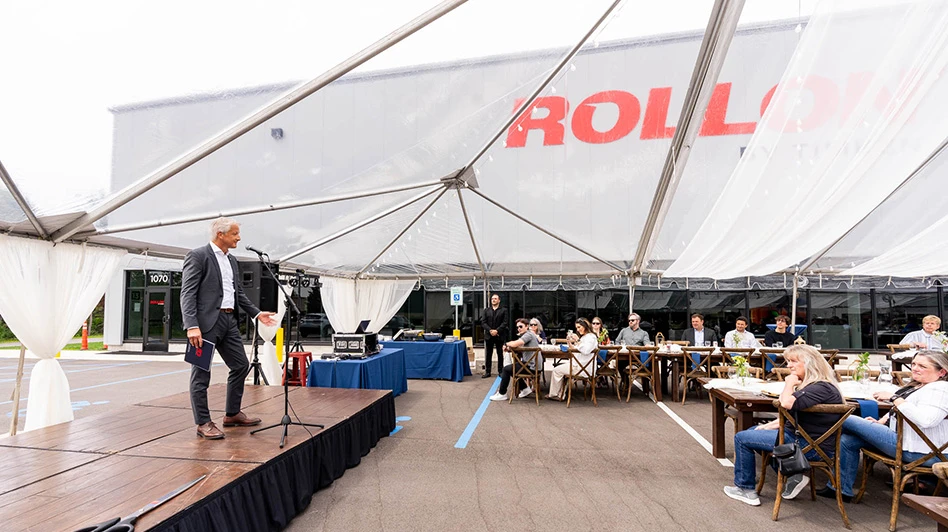
Portescap
Designers of surgical hand tools are constantly looking to develop ever more sophisticated products that will address the needs of the most challenging procedures and provide the highest levels of safety. As a result, the motion profiles for these tools are becoming increasingly complex, requiring increased quality and quantity of feedback data in a closed loop system.
With brushless DC (BLDC) motors, feedback options for sensing the position of the motor include hall sensors, an encoder, or sensorless feedback using software algorithms. In surgical hand tool applications that involve complex speed and acceleration motion profiles, an encoder is the best solution.
Examples of situations in surgical hand tools that call for an encoder include precise angular position control, exact velocity control, smooth torque control and increased safety through rotor position locking.
Potential applications requiring angular position control include robotic actuation or fine-tuned tightening control, where the output shaft of the motor needs to be precisely rotated from one angle to another. The feedback loop for this control system must provide enough resolution to command a rotation from 0-90 degrees without overshooting the target.

Rotation example
Precise velocity control is required in applications such as arthroscopic shavers, where an oscillation profile is characterized by timed changes in velocity. Leadscrew-driven linear motion assemblies are further potential applications, where the rapid movement of a load is critical. In both cases, an encoder provides the necessary feedback for tight control system realization of a target motion profile, providing data not only on the shaft position, but also on its speed and acceleration.
For applications such as reaming or precision tightening, smooth torque control is a key requirement. Typically, field-oriented-control (FOC) systems are used to provide smooth torque control over a wide speed range, and these control systems require the high-fidelity position feedback that is best provided by an encoder.
Finally, there are surgical hand tools that require safety features for shutdown routines or to protect an operator from a blade or bit. For example, if a sharp blade is required to remain within a safety shroud or stay unexposed to the surgeon, the position information from an encoder can define either a keep-out region or a target ‘home’ position to return to during specified situations.

Design considerations
Having decided that an encoder is the best fit solution for feedback in such surgical hand tool applications, there are several key design considerations for the encoder itself. Is an optical or magnetic encoder the best option? What resolution and accuracy are required? Should it be an absolute or incremental encoder? And what are the integration implications if the assembly is to be able to withstand the sterilization process within an autoclave?
When it comes to the choice of encoder technology, optical and magnetic are the two main categories. Optical encoders require a light source and sensor with a wheel between the two with transparent and opaque sections, usually along multiple tracks to generate the rotational pulses. Within magnetic encoders, there are magneto-resistive and Hall-effect based technologies. In autoclavable applications, with steam, fluids and potential debris, magnetic topologies offer a small and robust option.
Then the designer can look at whether the application requires an absolute or incremental encoder. An absolute encoder feeds back the absolute angle of the rotor position, with respect to a reference point, and thus always know the absolute position of the rotor, even after loss of power. In contrast, an incremental encoder will only provide an output when the rotor incrementally changes position. It can sense direction but isn’t reporting position referenced to an index point. As a result, the feedback system loses track of the true position of the rotor when powered off – information that can be critical for successful operation of a medical device.
What about resolution and accuracy? Resolution defines the precision capability of an encoder. In an incremental encoder the resolution represents the angular value of a single pulse. Resolution is often given in terms of the number of pulses in a single mechanical rotation. This definition is nearly the same in an absolute encoder but just defines the granularity of the angular sensing capability and is not tied to a single pulse.
Accuracy in an encoder represents the capability to correctly report the actual angular position of the rotor. It allows a system designer to understand the margin of error in the reported angle and to build in an allowable margin in the drive system.

Integration challenges
A key goal for the product designer is to make the surgical hand tool as compact and lightweight as possible. Optical encoders, typically mounted on the rear side of a BLDC motor, can require a shaft extension, and add axial length as well as increased overall diameter.
In contrast, an integrated magnetic encoder can often meet the feedback requirements for a drive while remaining within the motor’s maximum outer diameter, sealing all sensing components internal to the motor body, and minimizing the axial length growth. As a fully contactless sensing solution, and with no optical wheel to get damaged or obfuscated, the electronics can be sealed and protected against the autoclave environment.
We can see, then, that magnetic encoders can meet all the feedback requirements of even the most sophisticated motion profiles within surgical hand tools. Whether the application requires absolute or incremental position information, the magnetic encoder provides the necessary resolution and accuracy to enable the designer to develop a highly robust and precise drive system that can be easily integrated within the motor housing.Latest from Today's Medical Developments
- Diagnosis: Workflow Inefficiency | Treatment: Okuma Robot Loader Series
- Discover the future of manufacturing at GROB's 5-AXIS LIVE!
- Revolutionizing quality control with Hexagon's Autonomous Metrology Suite
- Autocam Medical's $70 million expansion to boost orthopedic job creation
- Platinum Tooling unveils new product catalog
- Meet the minds shaping CNC grinding at The Precision Summit
- Mitutoyo unveils innovative SurfaceMeasure-S Series sensors
- #69 Manufacturing Matters - Shopfloor Connectivity Roundtable with Renishaw and SMW Autoblok





